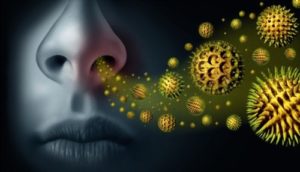 Most of us look forward to spring – after the cold of winter it’s time to get outside, to enjoy the warmer weather and take a moment to appreciate nature bursting into life. However for a large percentage of the population, this time of year is greeted with trepidation. Whilst spring may well be in the air, so is pollen, which can trigger allergic rhinitis, more commonly known as hay fever. Hay fever is an allergy to tree, grass or weed pollen, or the fungi or mould spores which are more prevalent in the warmer weather. For allergy sufferers the arrival of spring may well be accompanied by sneezing, coughing, wheezing, itchy watery eyes, and nasal congestion. Furthermore, these symptoms may instigate conditions such as asthma, conjunctivitis, sinusitis, etc.
Most of us look forward to spring – after the cold of winter it’s time to get outside, to enjoy the warmer weather and take a moment to appreciate nature bursting into life. However for a large percentage of the population, this time of year is greeted with trepidation. Whilst spring may well be in the air, so is pollen, which can trigger allergic rhinitis, more commonly known as hay fever. Hay fever is an allergy to tree, grass or weed pollen, or the fungi or mould spores which are more prevalent in the warmer weather. For allergy sufferers the arrival of spring may well be accompanied by sneezing, coughing, wheezing, itchy watery eyes, and nasal congestion. Furthermore, these symptoms may instigate conditions such as asthma, conjunctivitis, sinusitis, etc.
What causes an allergic reaction?
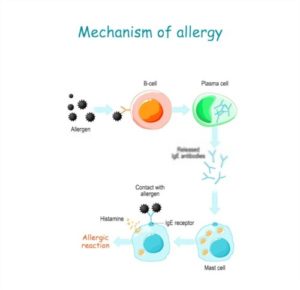 An allergy occurs when a harmless substance in the environment initiates an inappropriate immune response. The immune system cells work tirelessly to detect a threat from foreign invaders including bacteria, parasites, toxic substances and viruses, and the immune system identifies and labels them as either harmless or dangerous. A Type 1 immune response tolerates the presence of allergens. However, for some individuals the immune system cells incorrectly identifies them as a threat and generates a pro-inflammatory response, called a Type 2 immune response, which in most cases stimulates the production of immunoglobulin (Ig) E molecules. The first exposure which produces a Type 2 immune response is known as allergic sensitisation. Unfortunately, once sensitised, the body preserves the memory of the culprit and the IgE molecules are prepared for any further exposure, following which they will release inflammatory mediators such as histamine that cause the unpleasant symptoms associated with hay fever.
An allergy occurs when a harmless substance in the environment initiates an inappropriate immune response. The immune system cells work tirelessly to detect a threat from foreign invaders including bacteria, parasites, toxic substances and viruses, and the immune system identifies and labels them as either harmless or dangerous. A Type 1 immune response tolerates the presence of allergens. However, for some individuals the immune system cells incorrectly identifies them as a threat and generates a pro-inflammatory response, called a Type 2 immune response, which in most cases stimulates the production of immunoglobulin (Ig) E molecules. The first exposure which produces a Type 2 immune response is known as allergic sensitisation. Unfortunately, once sensitised, the body preserves the memory of the culprit and the IgE molecules are prepared for any further exposure, following which they will release inflammatory mediators such as histamine that cause the unpleasant symptoms associated with hay fever.
 Allergens are on the increase and it is currently estimated that worldwide there are 400 million individuals affected by hay fever. The World Allergy Organisation (WAO) warns that “the prevalence of allergic diseases worldwide is rising dramatically in both developed and developing countries.”
Allergens are on the increase and it is currently estimated that worldwide there are 400 million individuals affected by hay fever. The World Allergy Organisation (WAO) warns that “the prevalence of allergic diseases worldwide is rising dramatically in both developed and developing countries.”
Whilst the precise reason for the increase is not known, one theory known as the “hygiene hypothesis”, speculates that it relates to living in a cleaner, more sterile environment which limits the immune systems exposure to enough germs to fully develop its ability to differentiate between harmless and harmful irritants. Meanwhile other research indicates that the escalating use of antibiotics mirrors the increase in allergens, whilst other research proposes that the increased use of over-the-counter painkillers in children may be a factor.
Another theory blames the increase on inflammation, which is known to be a factor behind most diseases. If there is already an inflammatory and immunological imbalance, it’s speculated that an allergy can send the immune system into overdrive and instigate an over-the-top reaction.
Once an allergic sensitisation has been initiated it’s usually a lifetime companion and the only treatment is the management of symptoms. However, that said, a child may ‘outgrow’ hay fever in their mid to late-teens, although it can re-emerge in later life.
Treatments for symptoms of hay fever
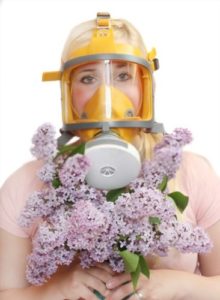 The best defence is to avoid or limit exposure to the allergen, but with pollen that’s just not possible. It’s just not practical to lock yourself away during pollen season, and more than likely the pollen will still penetrate inside anyway.
The best defence is to avoid or limit exposure to the allergen, but with pollen that’s just not possible. It’s just not practical to lock yourself away during pollen season, and more than likely the pollen will still penetrate inside anyway.
The following are the most popular over-the-counter remedies to alleviate the symptoms of hay fever.
Antihistamines – Designed to reduce or block histamine, these are the most commonly used treatment to alleviate the symptoms of hay fever. A side effect can be drowsiness.
Corticosteroids – Used to diminish inflammation.
Decongestants – Relieve nasal congestion by decreasing the swelling of nasal membranes to improve breathing.
It should be noted that some people can become tolerant of antihistamines over prolonged use, and decongestants just offer temporary relief. As with all man-made treatments, these synthetic remedies may offer some side-effects, for instance drowsiness is often associated with the use of one type of antihistamine.
It’s said that nature has a remedy for all ailments, so before you rush off to put more synthetic chemicals into your body, let’s first look at how natural botanics can help.
Black Seed Oil
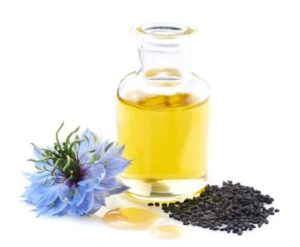 Black seed oil works in several ways to reduce the effects of hay fever, and can also play an important role as a preventative treatment to ensure that the start of spring does not mean the beginning of a season of misery.
Black seed oil works in several ways to reduce the effects of hay fever, and can also play an important role as a preventative treatment to ensure that the start of spring does not mean the beginning of a season of misery.
Rebalances the body’s immune system – Black seed oil is one of the strongest natural immunomodulators. More importantly, it has the potential to readdress the gentle balance between protective and destructive inflammation. By rebalancing the body’s inflammation reactions, it can counteract non-essential inflammation, but still enable healthy inflammation in response to a possible foreign attack, and therefore reduce the symptoms of, or even eliminate, allergies such as hay fever, in addition to arthritis, asthma, colitis, diabetes, cancer and cardiovascular disease. Studies have confirmed black seed’s ability to critically rebalance the body’s inflammation reactions, for instance one study of 66 subjects concluded that black seed produced a significant decrease in symptoms, plus the IgE antibodies detected in nasal secretions.
A natural antihistamine – Studies have indicated that two of the active ingredients in black seed oil, thymoquinone and nigellon, are natural antihistamines, with thymoquinone having the ability to inhibit histamine release.
Anti-inflammatory – Thymoquinone has also demonstrated that it is able to suppress the pathways of cyclooxygenase and lipoxygenase, the two main enzymes that initiate inflammation.
Decongestant – Black seed has a long history of use for upper respiratory ailments. Studies have confirmed that black seed oil inhibits inflammation of the respiratory airways and sinuses, and reduces nasal and chest congestion to ensure ease of breathing.
Studies on the overall effect of black seed on hay fever have confirmed the success of black seed in reducing the symptoms of hay fever. One such study investigating its effect on mild to severe symptoms, showed that 9 out of ten of the participants had severely reduced to no remaining symptoms after a period of six weeks.
Unlike their chemical counterparts, there are no indications of people becoming tolerant to naturally occurring antihistamines. However, natural antihistamines do not provide instant relief and may take around two weeks to work. It is therefore suggested that treatment with black seed commences at least two weeks before the anticipated start of the allergy, i.e. before the warmer weather begins heralding the arrival of spring and increased pollen. No adverse side-effects have been demonstrated by the use of natural antihistamines.
How to use:
As a preventative health tonic: 1 teaspoon every morning before food. Unleash all the health benefits of black seed for the entire body.
To relieve symptoms of hay fever: ½ teaspoon of black seed oil, twice a day. 2 drops three times a day, administered as nasal drops to relieve congestion. May also be rubbed on the chest and temples for further relief.
Essential oils
Essential oils are another gift from nature which can help to fight inflammation and congestion, plus kill pathogens such as mould and fungi which could be triggering an allergy. Here’s four that can bring relief in your battle against hay fever:
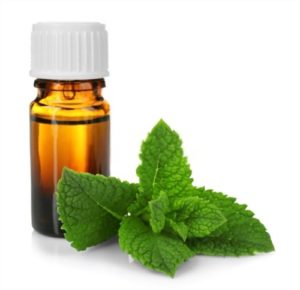 Peppermint Oil
Peppermint Oil
Peppermint has analgesic, anti-inflammatory, antispasmodic, decongestant, and expectorant properties. It drastically benefits respiratory health by reducing swollen membranes, opening the airways, and helping to break down mucus and clear blocked sinuses, thus promoting easier breathing. It can also help to reduce sinus headaches and relieve a scratchy throat. Allergies can also impact on your concentration and energy levels, and cause anxiety and mental fatigue. Peppermint has a stimulating and uplifting effect, relieves fatigue, and increases focus and concentration. It also offers an instant cooling effect when inhaled or applied topically to give quick relief.
Remedy:
Diffuser/oil burner: Add a few drops to your diffuser or oil burner and allow the therapeutic benefits to calm and relieve symptoms.
Direct inhalation: Inhale directly from the bottle or add a few drops to a tissue for a quick pick-me-up and to help clear a blocked nose.
As a rub: Add a few drops to a carrier oil to make a rub. Use as a chest rub to loosen phlegm and allay a cough. Massage into the temples to reduce sinus pressure, diminish a headache and relieve tension.
Steam inhalation: Add 1-2 drops to a bowl of steaming water. Steam with a towel over your head for 2 to 5 minutes to clear a stuffy nose and help break up chest and nasal congestion. Take care not to place your face too close to the steaming water as it can scald you.
Massage: Add a few drops to a carrier oil, to cool the body, alleviate stiffness and fatigue, and relax the mind.
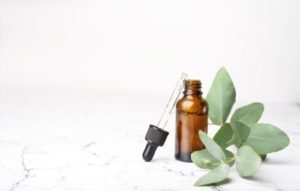 Eucalyptus Oil
Eucalyptus Oil
Eucalyptus oil has analgesic, anti-inflammatory, anti-itching, decongestant, expectorate, and immune stimulant properties. It offers complete respiratory support and works as a natural decongestant to break down phlegm and mucus, and expands bronchi and bronchioles of the lungs to promote easier breathing. It alleviates a cough, blocked or runny nose, and scratchy throat. In studies, eucalyptus oil has indicated its ability to rapidly decreases symptoms of hay fever. It is also a great remedy for headaches caused by sinus congestion due to seasonal allergies. Offers a cooling effect when inhaled or applied topically to give instant relief.
Remedy:
Diffuser/oil burner: Add a few drops to your diffuser or oil burner and allow the therapeutic benefits to relieve symptoms.
As a rub: Add a few drops to a carrier oil to make a rub. Use as a chest rub to loosen phlegm and allay a cough. Massage into the temples to reduce sinus pressure, diminish a headache and relieve tension.
Steam inhalation: Add 1-2 drops to a bowl of steaming water. Steam with a towel over your head for 2 to 5 minutes to clear a stuffy nose and help break up chest and nasal congestion. Take care not to place your face too close to the steaming water as it can scald you.
Massage: Add a few drops to a carrier oil, to cool the body, alleviate stiffness and fatigue, and relax the mind.
Bath: Mix a few drops to a bath product, some epsom salts or sea salts, and pour into hot running water. Sit back, relax and breathe in the aroma to help break up congestion, promote easier breathing, and alleviate any stiffness and tension.
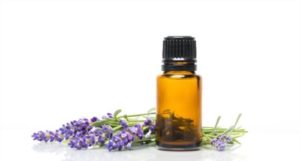 Lavender
Lavender
Lavender has analgesic, anti-inflammatory and antispasmodic properties and is known to be a natural antihistamine. It benefits the respiratory health and relieves allergic inflammation, calming symptoms such as coughing and wheezing. One study has demonstrated that lavender can prevent inflammation and the enlargement of mucous cells. It is very calming and dispels anxiety, and also aids in a deeper quality sleep which can be extremely beneficial to those suffering from allergies.
Remedy:
Diffuser/humidifier/oil burner: Add a few drops to your diffuser, humidifier or oil burner and allow the therapeutic benefits to relieve symptoms, promote relaxation and enhance sleep.
Massage: Add a few drops to a carrier oil, to relax the body, alleviate inflammation, and relax the mind.
Bath: Mix a few drops to a bath product, some epsom salts or sea salts, and pour into hot running water to help dissolve it quicker. Sit back, relax and breathe in the aroma to benefit respiratory health, relax the mind and body.
Sleep: Add a few drops to a spray bottle filled with water and use to mist your bedding to relieve symptoms, relax the mind, and enhance a good night’s sleep.
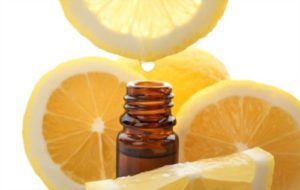 Lemon Oil
Lemon Oil
Lemon oil has analgesic, anti-inflammatory, expectorant, and mucolytic properties, and is also a natural antihistamine. It is excellent for coughs and respiratory ailments, and studies have proved its effectiveness in the treatment of allergic rhinitis. Lemon oil promotes easier breathing by reducing nasal congestion, and decreases excess mucus production. It also benefits the lymphatic system and stimulates lymph drainage which is beneficial in the treatment of respiratory conditions. Eliminates toxins, pathogens and allergens from the air and surfaces.
Remedy:
Diffuser/humidifier/oil burner: Add a few drops to your diffuser, humidifier or oil burner and allow the therapeutic benefits to relieve symptoms, promote relaxation and enhance sleep.
Massage: Add a few drops to a carrier oil, to relax the body, alleviate inflammation, and relax the mind.
Bath: Mix a few drops to a bath product, some epsom salts or sea salts, and pour into hot running water to help dissolve it quicker. Sit back, relax and breathe in the aroma to benefit respiratory health, relax the mind and body.
Air-freshener/surface cleaner: Add a few drops to a spray bottle filled with water and use as an air-freshener/surface cleaner to rid the air and surfaces of pathogens and possible allergens.
This year, don’t let allergies ruin your enjoyment of seeing nature burst into life. Allow Nature to take care of you, and get outside and finally appreciate the joys of Spring.

